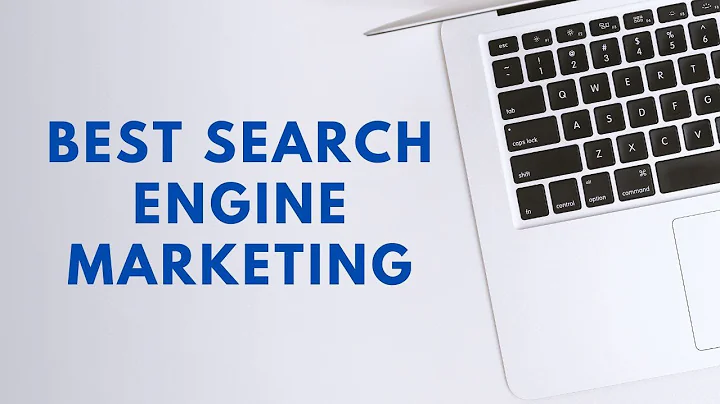Unlock the Future: Mastering SEO ROI Forecasting
Table of Contents
- Introduction
- Key Concepts of SEO Forecasting
- Traffic Projections
- Revenue Models
- Best Practices
- Industry Benchmarks
- Conversion Rates in Different Industries
- Success Stories: Amazon, Tile, and Gap Factory
- Projecting SEO ROI
- Setting Realistic Goals
- Calculating Conversion Rates and Traffic
- Considering Branded and Non-Branded Traffic
- Tracking and Reporting Results
- Factors Impacting SEO ROI
- Site Speed
- Backlink Profile
- Content Optimization
- User Reviews and Ratings
- Checkout Process Optimization
- Challenges and Opportunities in SEO Forecasting
- Adapting to Changing Market Conditions
- Segmenting Customer Groups
- Incorporating Feedback and Learnings
- Conclusion
🔍 Introduction
Welcome to our webinar on forecasting the return on investment (ROI) of search engine optimization (SEO). In this webinar, Kevin Indig, VP of SEO and Content at G2, will guide you through the process of estimating the ROI of your SEO efforts. By understanding the key concepts and benchmarks in SEO forecasting, you'll be equipped with the tools and knowledge to set realistic goals and measure the success of your SEO campaigns.
✨ Key Concepts of SEO Forecasting
To accurately forecast the ROI of SEO, it's important to understand the key concepts of traffic projections and revenue models. By combining these concepts with best practices, you can create a solid foundation for your SEO forecasting efforts.
🚀 Traffic Projections
When projecting SEO traffic, there are several factors to consider. Start by identifying the specific page types or keywords you want to target. Determine if you're optimizing for a single keyword or a pattern of keywords. Consider the incremental impact of optimizations on your current traffic and estimate the potential traffic increase. By testing your optimizations on a small scale and analyzing the results, you can refine your projections and make more accurate forecasts.
💰 Revenue Models
The revenue models in SEO forecasting vary depending on the industry and monetization model of the business. For e-commerce websites, the revenue is calculated based on the average conversion rate and gross margin of the products. Marketplaces rely on customer lifetime value (LTV) projections, while subscription-based businesses consider the average customer lifetime value and conversion rate. In enterprise sales, the focus is on the visitor-to-marketing-qualified-lead rate and the average deal size.
✅ Best Practices
To achieve high conversion rates in SEO, it's important to follow best practices. Learn from success stories like Amazon, Tile, and Gap Factory. Amazon excels in providing comprehensive product information, leveraging customer reviews, and offering a seamless checkout process. Tile differentiates itself by comparing its products side by side, simplifying the checkout experience, and focusing on email marketing. Gap Factory attracts customers with heavily discounted products, clean product pages, and a clear value proposition.
📊 Industry Benchmarks
Understanding industry benchmarks is crucial for accurate SEO forecasting. Conversion rates vary across industries, with fashion brands and marketplaces generally performing better than consumer brands. By analyzing industry benchmarks, you can set realistic goals and align your expectations with the average performance within your industry.
📈 Projecting SEO ROI
When projecting SEO ROI, it's essential to set realistic goals and calculate the impact of your optimizations on traffic and conversions. Consider factors such as site speed, backlink profile, content optimization, user reviews, and checkout process optimization. Differentiate between branded and non-branded traffic and track the results of your SEO efforts. Iterate your projections based on learnings and adapt them to changing market conditions to ensure accurate forecasting.
🌟 Factors Impacting SEO ROI
Several factors impact the ROI of your SEO efforts. Optimizing site speed improves user experience and can positively impact search rankings. Building a strong backlink profile enhances your website authority and visibility in search results. Optimizing content for relevant keywords and user intent increases organic traffic. Encouraging user reviews and ratings builds trust and influences conversions. Streamlining the checkout process and offering attractive promotions can boost conversion rates.
🌐 Challenges and Opportunities in SEO Forecasting
SEO forecasting is not without its challenges. Adapting to changing market conditions, such as the current COVID-19 pandemic, requires regular reevaluation of projections. Segmenting customer groups allows for better targeting and personalized forecasting. Incorporating feedback and learnings from previous campaigns ensures continuous improvement in forecasting accuracy.
🔮 Conclusion
In conclusion, SEO forecasting is a dynamic process that requires a deep understanding of traffic projections, revenue models, and industry benchmarks. By setting realistic goals, tracking and reporting results, and incorporating best practices, you can effectively forecast the ROI of your SEO efforts. Stay proactive in adapting to market conditions, segmenting customer groups, and continuously refining your approach to maximize the success of your SEO campaigns.







